| August 14th, 2005 01:52 PM |
|
|
| Ten Thousand Motels |
 |
| August 14th, 2005 02:18 PM |
|
|
| mac_daddy |
 |
| August 14th, 2005 02:20 PM |
|
|
| mac_daddy |

Ken Kesey, aboard his bus "Further," Aspen Meadows, New Mexico, 1969. Author of One Flew Over the Cuckoo's Nest, Kesey and his troupe, the Merry Pranksters, celebrated both spontaneous street theater to engage a mainstream audience and the use of psychedelic drugs.
link |
| August 14th, 2005 02:30 PM |
|
|
| Ten Thousand Motels |
The bus was great but Leary was an asshole in real life. Leary of course was an informant....a.k.a. rat.
 |
| August 14th, 2005 02:36 PM |
|
|
| kath |
what does leary have to do with this thread on kesey/hippies??
leary was an interesting character..but a snitch?? phooey!! |
| August 14th, 2005 05:31 PM |
|
|
| jb |
quote:
Ten Thousand Motels wrote:
The bus was great but Leary was an asshole in real life. Leary of course was an informant....a.k.a. rat.

Met him at UF when debating G. Gordon Liddy as I was involved in student Gov....I sensed he was a phony.... |
| August 14th, 2005 06:33 PM |
|
|
| Ten Thousand Motels |
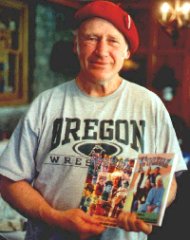
Neal Cassady


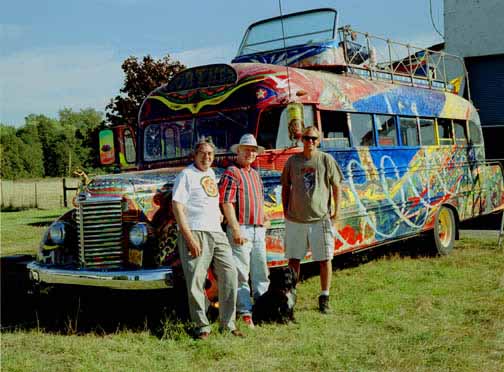
[Edited by Ten Thousand Motels] |
| August 14th, 2005 08:09 PM |
|
|
| Surround Sister |
Spooky, that Leary-guy.
Already old when he claimed the famous Tune in-message. |
| August 14th, 2005 08:18 PM |
|
|
| VoodooChileInWOnderl |
quote:
kath wrote:
what does leary have to do with this thread on kesey/hippies??
leary was an interesting character..but a snitch?? phooey!!
Kath, Leary was authentic, a real intellectual nolt a charlatan always parting high. Ken Kesey tried to make in the west coast what Timothy Leary was doing in the east coast. Kesey was after Leary and learned a lot from him. My eldest brother met Leary in person.
Deadheads here ( Hi Jaxx  ) know that Ken Kesey was the one who organized the acid test public lessons and parties --- Can you pass the acid test babies? ) know that Ken Kesey was the one who organized the acid test public lessons and parties --- Can you pass the acid test babies?
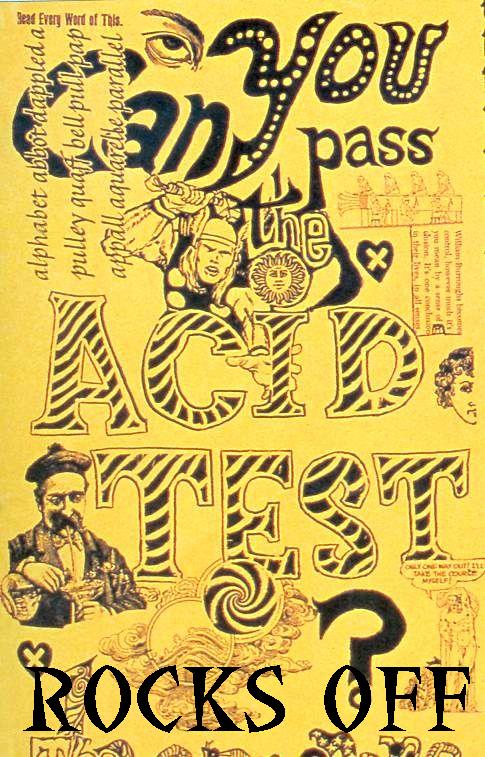
First with the early Jerry Garcìa group the Warlocks and then all with the Grateful Dead.
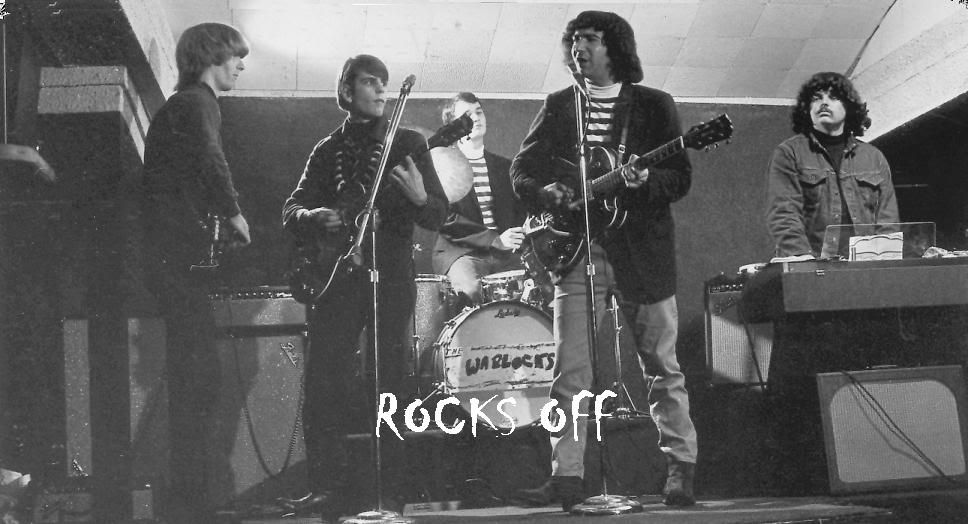
The following texts and photos were scanned today for this thread, all from just one book "I want to take you higher" The sike-ay-delic Era 1965-1969.
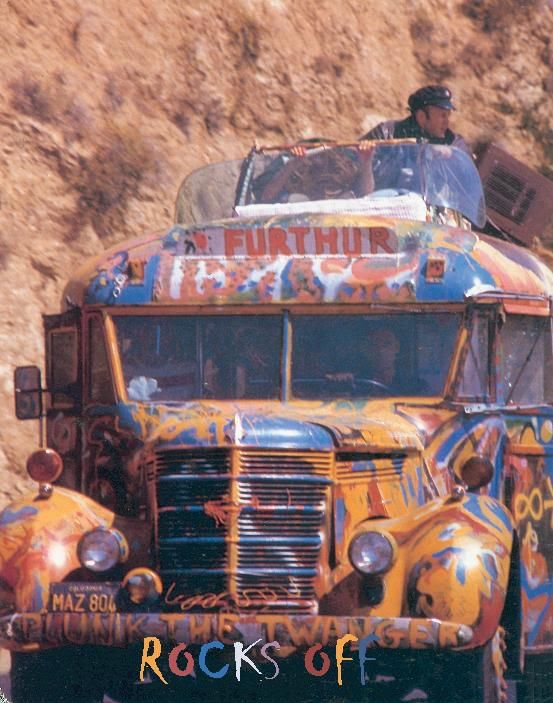
In 1964, novelist and agent provocateur Ken Kesey embarked on a cross-country trip with his Merry Pranksters aboard a school bus that was given a psychedelic paint job. It was an expedition fueled not only by gasoline but by LSD, which was plentifully ingested by Keseys counterculture pioneers searching for new horizons.
Ken Kesey decided to go public with his own parties. On November 27, 1965, he put up a small poster in a bookstore advertising an “Acid Test” in a private home. It was clear to an acidhead what Kesey hoped to do: throw a big party where everyone took LSD and made some collective cosmic breakthrough. Not by meditation and listening to Indian music, the way Timothy Leary was recommending on the East Coast, but by courting the unexpected. If you came to an Acid Test, you’d find Kesey’s Merry Pranksters messing with microphones and gadgets, plus a light show, a slide show about American Indians, a rock band called the Warlocks, Kesey’s own musical group (the Psychedelic Symphonette) and lots of weird people.
But how to describe what he was inviting people to? Kesey considered it participatory theater, like the Happenings that were the current rage in the art world. Everybody paid a dollar admission, including Kesey.
In December, Kesey held a public Acid Test at a bar in Oakland. It was advertised by r bizarre poster showing a Greek statue that was say-ing: Only one way out! I’ll take the course myself. Hundreds of people came. A week later Kese¿ threw another Acid Test in a remote communig north of San Francisco.
Each Acid Test was larger than the one befor< it, and amazingly, no lightning bolt struck it down Maybe Kesey was right. Maybe you didn’t have t( think about the squares and the police at all. Maybe by overcoming fear, by taking LSD boldly an( disregarding the consequences, you could make your breakthrough.
|
| August 14th, 2005 08:43 PM |
|
|
| VoodooChileInWOnderl |
There were in fact, two buses "The Furthur" the one who Ken Kesey used for that tour and "The Further"
 |
| August 15th, 2005 09:18 AM |
|
|
| mac_daddy |
that veneta show is one of the classics...
great thread. |
| August 15th, 2005 11:29 AM |
|
|
| Ten Thousand Motels |
Biography of Ken Kesey (1935-2001)
Ken Kesey, the youngest of two sons, was born in on September 17, 1935 in La Junta, Colorado and in 1946 moved with his family to Springfield, Oregon, where he spent several years on his family's farm. He was raised in a religion household where he developed a great appreciation for Christian fables and the Christian ethical system. During high school and later in college, Kesey was a champion wrestler, setting long-standing state records in Oregon. Voted "most likely to succeed" in high school, Kesey was an unlikely candidate to become one of the most controversial figures of his age and one of the leading figures of the counterculture.
After high school, Kesey eloped with Faye Haxby, his high school sweetheart, and they had three children together: Jed, Zane and Shannon. Kesey attended the University of Oregon with a degree in Speech and Communications. He also received a Woodrow Wilson Fellowship to enroll in the Creative Writing program at Stanford. While at Stanford, he participated in experience involving chemicals at the psychology department to earn extra money. These chemicals included psilocybin, mescaline and LSD. It was this experience that fundamentally altered Kesey, personally and professionally. While working as an orderly at the psychiatric ward of the local VA hospital, Kesey began to have hallucinations about an Indian sweeping the floors. This formed the basis for 'Chief Broom' in One Flew Over the Cuckoo's Nest, his writing project at Stanford.
While at Stanford, Kesey lived at Perry Lane, a bohemian community in Palo Alto where he became notorious for throwing parties in which certain chemicals mysterious found their way into the punch. Kesey published One Flew Over the Cuckoo's Nest in 1962. The novel was an immediate critical and popular success. Dale Wasserman adapted it into a successful stage play, while Milos Forman directed a screen adaptation in 1975.
To do research for his second novel, which dealt with a family of loggers, Kesey moved to La Honda, California, where he wrote Sometimes a Great Notion, published in 1964. The novel deals with the conflicts between West Coast individualism and East Coast intellectualism. In 1964, Kesey and his friends, who had become known as the Merry Pranksters, bought a 1939 International Harvest school bus and drove to New York to see the World's Fair. Kesey recruited Neal Cassady from Kerouac's On the Road to drive the bus, and filmed a significant portion of the journey; Kesey would later show clips from the trip to chemically-induced audiences at his parties. Kesey became the proponent of a local band known as the "Warlocks," which later became the Grateful Dead.
Kesey and his Merry Pranksters became notorious for their "Acid Tests" and use of LSD and other drugs. Kesey's exploits with the Merry Pranksters during this period formed the basis for a best-selling book by Tom Wolfe (A Man in Full, The Bonfire of the Vanities) called The Electric Kool-Aid Acid Test. When the government made LSD illegal, Ken and the Pranksters fled to Mexico. When he returned to the United States for a final performance, he was arrested on a marijuana charge. Upon his release from jail, Kesey moved to a farm in Pleasant Hill, Oregon to raise his family. He did not publish his third novel, Sailor Song, until 1992, but did write several shorter works and compilations during the decades after Sometimes a Great Notion. Even decades after his counterculture experience, Kesey did not "settle down." As he attested on his website late in life, Kesey warned that every now and then he got the itch to do "something weird." Kesey died on November 10, 2001 following cancer surgery on his liver.
|
| August 15th, 2005 11:37 AM |
|
|
| Saint Sway |
The Black Crowes "Further Festival" set lists here
http://www.crowesbase.com/misc/Setlists/Furthur/furthur.html |
| August 15th, 2005 03:27 PM |
|
|
| Tom |
This is a very intersting thread, didn't know about this and the relation with the Grateful Dead thank you
Any relation with the Stones? (no pun intended) |
| August 15th, 2005 04:33 PM |
|
|
| Ten Thousand Motels |
 |
| August 15th, 2005 04:46 PM |
|
|
| Ten Thousand Motels |
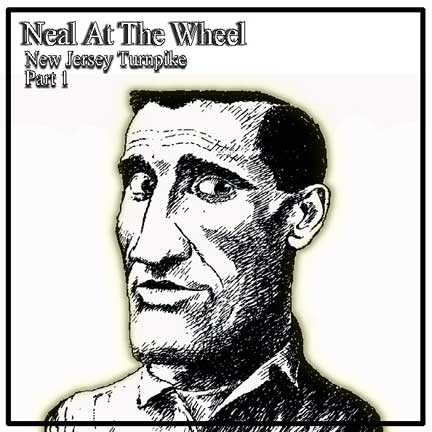

[Edited by Ten Thousand Motels] |
| August 15th, 2005 04:51 PM |
|
|
| Ten Thousand Motels |


[Edited by Ten Thousand Motels] |
| August 16th, 2005 12:27 AM |
|
|
| Ten Thousand Motels |
Garcia's trip is far from final
By DAVID BARTON
Sacramento Bee
Last Updated: Aug. 14, 2005
From the time he first stepped on stage with the Grateful Dead, Jerry Garcia, dubbed "Captain Trips" by his following, exhibited the kind of charisma that would make him a revered cultural figure.
Even after his death at 53 from heart failure 10 years ago this month, his influence echoes among the younger musicians and fans of the booming jam-band genre. The same is true for older fans who - long ago won over by the music - sport J. Garcia ties with their business suits and drink J. Garcia wines at suburban dinner parties.
His prolific musical output plays on in archival releases that include the Grateful Dead and his own Jerry Garcia Band. Prints of his paintings sell through art galleries, a line of designer rugs has debuted, and there are neckties and J. Garcia Birkenstocks.
"Shakedown Street," an off-Broadway show based on the songs Garcia wrote with Robert Hunter, opened Saturday in New York. An amphitheater in McLaren Park in San Francisco was renamed for him.
And then there are the fans, like this one who posted feelings on a "10th anniversary" discussion thread on the Web site www.jerry garcia.com : "I find myself wondering how different things might be if he were still around. Would we still have a war?"
But while Garcia's impact as counter-culture guru, jam-band avatar and guitar legend has provoked endless books, Web sites and late-night rap sessions, those who knew him agree on one thing: He couldn't handle the legacy thing.
"As soon as I hear 'impact,' I hear pomposity, and I think, 'Jerry would hate that,' " says Dennis McNally, the Dead's publicist, a longtime Garcia confidant and author of the 2004 book "A Long, Strange Trip: The Inside History of the Grateful Dead" (Broadway Books).
"He never, ever felt worthy of the adoration," says David Gans, another longtime chronicler of the Dead's 40-year saga. "He thought of himself as a regular (guy)."
As McNally recalls, "His standard line was, 'So what the (expletive) do I know?' He knew about his own normal self, the ways he couldn't function."
He was certainly from a humble background, and though he was a considerable visionary in some ways, his first and foremost passions were music and art.
San Francisco born, bred
Garcia was born in the Excelsior section of San Francisco's Mission District, a fifth-generation San Franciscan on his mother's side. He was the son of a musician, Jos, whose parents had come from Spain some years before, and a mother, Ruth, of Swedish and Irish background.
Thus, says McNally, though he is often assumed to be Mexican, from birthplace and surname, "He was ethnically very much a product of his Swedish and Irish grandparents, who raised him while his mother worked."
His dad died when Garcia was 4, drowned while they were fishing on the North Coast. Garcia, guided by his maternal grandfather into music, started playing the guitar in his teens, inspired by the then-new rock 'n' roll (Elvis, Buddy Holly and blues guitarists such as Freddy King were favorites) before discovering the banjo, about which he became obsessive.
According to McNally, Garcia, frustrated by the tiny audience for bluegrass in the Bay Area at the time, toured the South during the summer of 1964, looking for a place to live.
He returned to San Francisco, perhaps because Garcia at heart was a beatnik, absolutely devoted to Jack Kerouac and inclined, say his friends, to speak in the beatnik style.
"He had this really nasal voice," says McNally, mimicking a high, nasal voice. "He chirped. He'd always do a little, 'Hey man, how ya doin'?' "
Eventually, Garcia and fellow music teachers at a local music store formed a jug band. They later were inspired by friend Ron "Pigpen" McKernan (a janitor at the store), who played them the debut Rolling Stones album and suggested a rock band. Thus was born the Warlocks, and a quick name-change later, the Grateful Dead.
Band formed in '65
Formed 40 years ago this month, the Dead became the house band for the LSD-induced "acid test" experiments of the mid-'60s, which grew into the San Francisco psychedelic scene that came to rival "swinging London."
Though initially less popular than other groups in the scene, notably the Jefferson Airplane and Janis Joplin, the Dead far exceeded them in longevity and ultimately became the most consistently successful American touring band of the 1980s and early '90s.
At its peak, the Dead took in as much as $50 million a year in touring grosses.
But, says McNally, "Jerry understood himself to be an heir to Kerouac and was very clear that he didn't want money to have a hold on him. Which meant, in his mind, that he had to spend more than he made. He felt that it was wrong to build it up. He was waiting for his next paycheck the day he died.
"He wanted to love people and make music, and anything resembling conventional materialism was anathema to him. But he was American enough to want a big car."
The Dead was a democracy of diverse players, but Garcia was the acknowledged leader, and his guitar playing - a distinctive, melodic style that was the group's signature sound - was the center of his eclectic artistic universe.
"His reputation is overblown among Deadheads, who can be uncritically admiring," says Gans, who has long hosted radio shows and written books and articles about the band. "They say he's the greatest guitarist who ever lived, but Jerry would be the first guy to say, 'Get a grip.'
"But much of it is merited," adds Gans. "He had a vastly open mind, extremely catholic tastes, and he was a brilliant synthesizer of styles."
He was also a very distinctive player, whose sound developed, but didn't significantly change, over his 30 years with the Dead.
"His sound didn't change that much, whether he was playing a Strat in '71 or a custom guitar in 1990," says Blair Jackson, who has written extensively about the Dead, including publishing a fanzine. "It was just his touch, which is the mark of a great guitarist. . . ."
Health problems
But, as even his admirers note, those hands grew shakier over time. A combination of his increasing use of cocaine and heroin, his worsening diabetes and generally declining health led to heart failure at 53.
This Elvis-like combination has been the subject of much discussion, and McNally in particular objects to the focus on drugs as the cause of Garcia's decline.
"Heroin didn't kill him," he says. "Cheeseburgers, milkshakes and cigarettes killed Jerry Garcia."
Still, drugs were a part of Garcia's life from the time he discovered marijuana at 15, and he was the proud poster child for the psychedelic culture, at least in the early years.
"Jerry was dabbling with everything," says Steve Parish, Garcia's roadie, road manager and the man widely described as his best friend since 1969. "We all were. A lot of the stuff we did with psychedelics we're very proud of. We moved into new frontiers; it took some courage to do that before anyone else."
Gans says Garcia was the leader of an ambitious group of men who were very deliberately trying to expand their consciousness and their community, and they were attempting to do it with music.
"Those guys (the Dead) kicked the door open and stepped through and took a lot of people with them," he says. "And being the conductor of that train, people might have mistaken Jerry for the designer. So it was understandable that he was frightened, annoyed and driven into retreat by it."
Heavy responsibility
The "train" became a juggernaut over time, and Garcia, for one, eventually couldn't handle it. But he had been elected anyway.
"He was the center of a gigantic social system, and he didn't have the will or even power to stop it," says Gans. "People were dependent on him, so many people organized their lives around him. I heard long ago that one of the reasons he stopped talking on stage was he was tired of his words being given more weight than he intended."
"Once you called him 'Captain Trips,' the pressure was on," says Jackson. "I interviewed him after his time as a junkie in the early '80s, and he said he viewed it as 'a long vacation.' And I think it was - a vacation from this huge responsibility."
Being addicted was an inadequate solution, all agree, though it worked for awhile.
"It hurt his art, and it hurt his soul," says McNally. "And it covered up the symptoms of his health problems."
But whether he liked it or not, whether he felt he deserved it or not, there's consensus that Garcia was, at the end of the day, a wonderful leader.
"He was trustworthy," says McNally. "That's why people followed him."
Parish agrees. "He was a great peacemaker. He'd give of himself completely to resolve any conflicts."
Parish watched Garcia's decline on a daily basis, traveling from gig to gig, and says, "There's a simplistic view of (his decline), but the fact is, it was a long process. It was stupid in some ways, but everyone has a dark side."
But, he adds, "The glow the man had shined through his dark side. He wouldn't hurt anyone else, but he hurt himself. It was his way of saying, 'I'm not perfect.' "
Appeared in the Milwaukee Journal Sentinel on Aug. 15, 2005.
|
| August 16th, 2005 12:40 AM |
|
|
| Ten Thousand Motels |
July 25, 2005
Time spent with Ken Kesey provides backbone for film
By KATU Web Staff
A filmmaker documenting the lives of people who live out of converted vans and buses captured one of the last in-depth interviews with iconic author and Oregon resident Ken Kesey.
Max Koetter was making his documentary "Rubber Tramps" when, on his father's advice, he tracked down Kesey at his Oregon farm in 2001.
The real object of his search was Kesey's famous converted bus, 'Further'. The bus was a 1960's cultural icon and a centerpiece of the counter-culture book "The Electric Kool-Aid Acid Test".
After returning to Oregon from the original Woodstock festival in New York State, Kesey parked the bus in a field on his Pleasant Hill farm, and never drove it again. It remains there to this day, slowly rotting away.
Koetter's film centers on people who live their lives on the road, crossing the country and circling the world in converted school buses, vans and motorized homes of all sorts. They call themselves 'rubber tramps'.
While shooting on Kesey's farm, Koetter spent time interviewing Kesey about the philosophy of travel, and the legacy of the famous converted school bus with the bubble dome and psychedelic paint job.
The interviews and conversations became the backbone for the film, with words by Kesey working as narration.
Several months later, Kesey passed away.
Koetter's documentary has just come out on DVD and can be purchased online.
http://medicinebowgallery.com/docu/buy_dvd.html
[Edited by Ten Thousand Motels] |
| August 16th, 2005 01:02 AM |
|
|
| Ten Thousand Motels |
"Rubber Tramps" film review by Alan Ruskin
Rubber Tramps is a documentary film about people who live on the road traveling as they please in converted buses, vans and trucks - the "rubber" being, of course, the tires on their infinitely varied and sometimes startling-looking vehicles. While rubber may be apropos, "tramps" seems somewhat inaccurate as a generic term for these folks, many of whom seem more advanced and "together" than your typical sedentary dweller.
Most main-streamers not-in-the-know might choose to write off these freedom-seekers as an undesirable sub-culture on the fringes of society, the only environment that will harbor them, outcasts and weirdoes that they are. But not after "Rubber Tramps," no sir, not after viewing this quixotic and quietly penetrating film that succeeds in arousing sentiments in us that we might not have expected, feelings of admiration, respect, marvel and yes, even flashes of heart-rending, green-as-grass envy.
The odyssey begins with commentary by that luminary of hippydom, the late Ken Kesey, the celebrated author ("One Flew Over the Cuckoo's Nest") and avatar of the psychedelic 1960s. In his final media appearance, Kesey greets us from atop a tractor while expounding upon what it means to be truly alive. He initially invokes the renown gestalt psychologist, Frits Perls, who said, as Kesey reminds us, "Usually you're not really there - your mind is elsewhere - come back here, come back here to me." And that's what "Rubber Tramps" is all about - being in the moment, appreciating life for the natural wonder that it is, and moving, always moving, to see and experience as much of it as you can.
After Kesey's pithy introduction, filmmaker Max Koetter of Just Passing Through Productions, hits the road and takes us on a leisurely, beautifully paced journey through an alternate reality and panoply of characters as diverse as you could imagine.
There's "Freedom," a thirtyish, bearded, bright-eyed fellow who plays a small harp, juggles a lustrous glass ball and defines society's view of his ilk - "The culture doesn't have room for the mobile being (i.e., rubber tramp) in their social myth. We're seen more as a vagrancy, a degraded experience that only the poor would choose, rather than as an adventurer who chooses to step out boldly from the mainstream." This fellow called Freedom impresses us with his intellect, his poetry and above all, his humanity.
There's "Easy," a self-dubbed "aging Deadhead," (for those who may not know or remember, this means a devoted fan of the legendary rock group, "The Grateful Dead") who in his youth followed the group on its tours and decided to stick with the roadie lifestyle for the rest of his life. Easy reveals the elusive secret of his contentment -- "It's about freedom - the only thing holding me where I am now is me." He spends many of his afternoons in friendly games of dominoes with his fellow rubber tramps. "We play in daylight so we don't have to use the battery-powered lights."
In the idyllic course of "Rubber Tramps" we are treated to much gorgeous scenery and the innovative vehicles that transverse it - buses and vans converted into rustic, charming homes which are compact by any standard but whose inhabitants wouldn't have it any other way. We see the "Bicycle Bus" of RomTom (which means "Gypsy Tom"), the itinerant artist, photographer, writer and activist who earlier in his colorful life was jailed and savagely persecuted for his anti-war stance in the Viet Nam War era. After thirty years on the road with his French-Canadian wife (who now suffers from mental difficulties resulting from the government having "rescued" their three daughters from their hippy life-style), Rom Tom is as mellow and peace-loving as can be, still repairs and purchases bicycles wherever he goes, a gaggle of which famously decorate the top and sides of his '74 Ford bus, and has written a prodigious tome about his life entitled Comporting Roadwise. He also has many beautiful and wondrous photographs to display, visionary testaments to the legacy of the Rainbow People, a loosely knitted confederation of freedom-lovers that embodies the hippy ethic of the late 60s and early 70s, and still gathers to celebrate their spirit-driven counter-culture life-style. RomTom, as much as anyone in this film, makes us yearn for those magical days gone by.
Another legendary vehicle that we are privileged to glimpse is the "Further" bus immortalized by Kesey and his Merry Pranksters. In fascinating, grainy home-movie clips we see hippy luminary Neal Cassady at the wheel of the bus while spouting his own brand of wisdom - Kesey says of Cassady, "He believed that you had to be out there ahead, pushing yourself. He used the bus and cars as a visual aid, not just a means of transportation. The vehicle is an extension of our personalities and our dreams." Another classic comment and passionate cry for peace that Kesey as narrator makes in one of his several appearances is, "There are people who want to expand consciousness, and people that want to limit it - nothing limits consciousness as well as killing people with a gun." He adds, in certainly one of his more provocative quotes, "Instead of bombing Bosnia, why not take $80 worth of LSD and spread it over everything - then let 'em work it out."
On a tamer domestic level, another traveler shows us a book, "Rolling Homes," by Jane Lidz, in which we see stunning examples of the artistry and ingenuity that go into many of these home-spun vehicles, including one filled with ravishingly rustic, ornately carved wooden furnishings.
Another touching vignette focuses on a combat veteran, damaged both physically and emotionally from his stint in Viet Nam, who nonetheless struggles to raise his young son while maintaining the on-the-road life style for both of them. To judge by the boy's winning smile and playfulness, his determined father is succeeding admirably.
The traveler Freedom reappears from time to time, always sharing some thoughtful observation. In explaining the origin of his name, he espouses a view that might epitomize the belief of most of these folks, as well as appeal to many of the rest of us: "I seek freedom from fear, attachments and passions. Sometimes apprehension about the future might intrude and I might feel concerned about being abandoned by friends and family because of my chosen way of living. But I get over it quickly when I realize how rich the moment is with opportunity."
These are just a few of the very genuine characters in "Rubber Tramps," characters who compel us to reflect upon ourselves and the sorts of lives we are living. As Kesey harks back to his halcyon days, "We were trying to reclaim our lives to be in the present, not the past or the future like society tells us to be - but instead to be in a state of grace, exulting in a feeling of beingness, with nothing else to achieve except to be present and involved with life." It is a tribute to the makers of "Rubber Tramps" that they have convincingly captured that feeling. |
| August 16th, 2005 07:45 AM |
|
|
| mac_daddy |
"...cowboy neal at the wheel on a bus to never-never land."
 |
|











 ) know that Ken Kesey was the one who organized the acid test public lessons and parties --- Can you pass the acid test babies?
) know that Ken Kesey was the one who organized the acid test public lessons and parties --- Can you pass the acid test babies?








